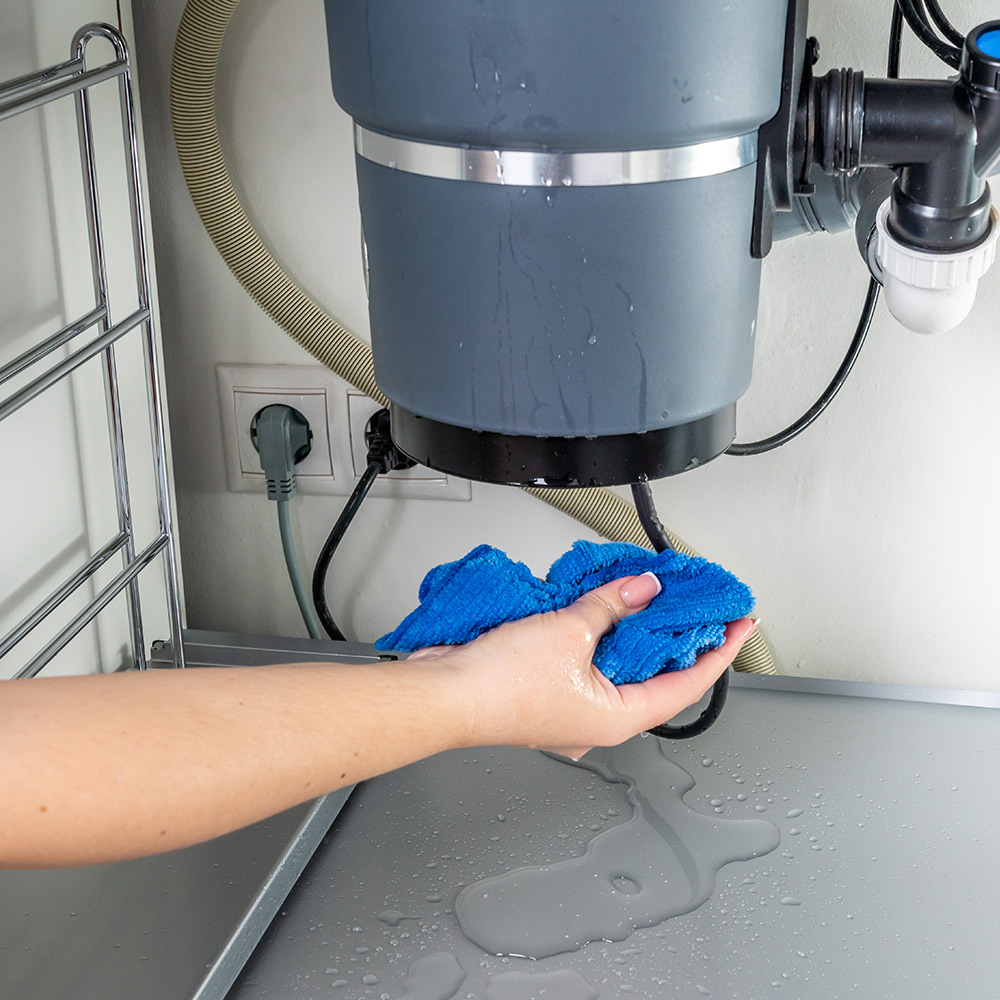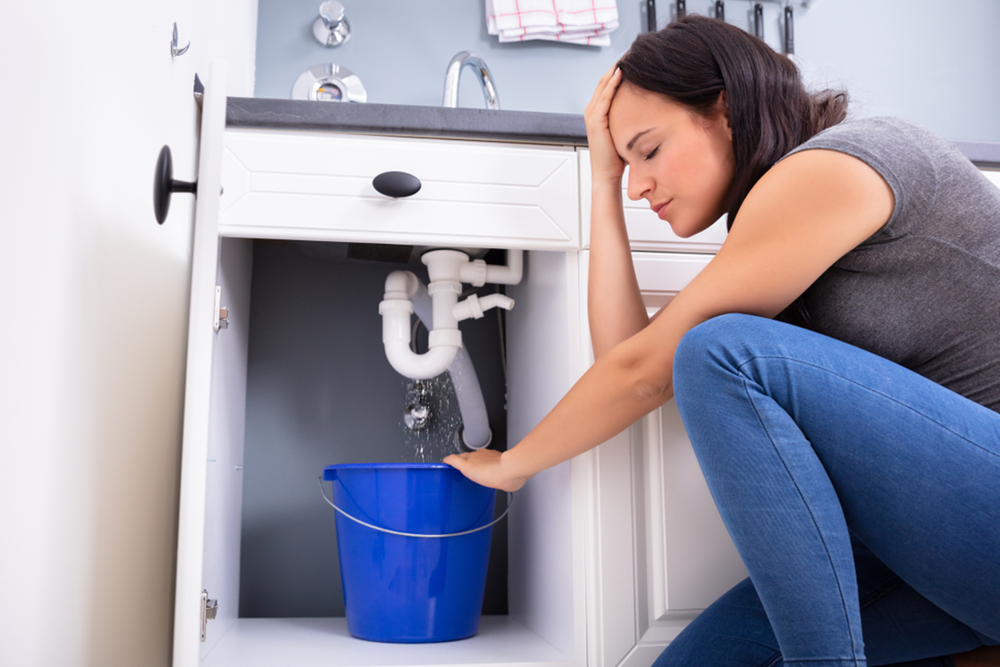Your Guide to Resolving a Leak in Your Garbage Disposal
Your Guide to Resolving a Leak in Your Garbage Disposal
Blog Article
What're your thoughts and feelings about The Handy Guide To Fixing Your Garbage Disposal Leaking?

Waste disposal unit are crucial cooking area devices that assist in disposing of food waste efficiently. However, a dripping garbage disposal can be a frustrating and unpleasant issue to deal with. Thankfully, numerous leaks can be dealt with conveniently with a couple of straightforward steps. In this post, we will discuss exactly how to fix a dripping garbage disposal successfully.
Introduction
Garbage disposals are mounted under cooking area sinks and are designed to shred food waste into smaller items, permitting it to pass through the plumbing system quickly. While these gadgets are usually trusted, leakages can occur over time due to deterioration, loose connections, or damage to the device.
Step-by-Step Overview to Repairing a Leaking Garbage Disposal
Switch off the Power
Prior to trying any kind of fixings, make sure that the power to the garbage disposal unit is shut off to prevent the threat of electrical shock.
Locate the Leakage
Determine the specific place of the leak and establish the reason
Tighten Links
Use a wrench to tighten up any loose links between the disposal system and the pipes system.
Change Seals or Gaskets
If the leak is because of worn seals or gaskets, eliminate the old components and replace them with brand-new ones.
Patching Cracks or Openings
For fractures or holes in the disposal unit, usage epoxy or an ideal patching material to seal the broken location.
Identifying the Resource of the Leak
Before attempting to repair a leaking waste disposal unit, it is vital to determine the resource of the leak. This can usually be done through visual inspection or by carrying out simple tests.
Visual Evaluation
Check the garbage disposal system carefully for any type of indications of water leak. Pay attention to areas around seals, gaskets, and connection points.
Checking for Leakages
One means to test for leaks is by running water through the disposal unit and looking for any visible indicators of leak.
Usual Sources Of Leakages in Rubbish Disposals
Worn Seals and Gaskets
Seals and gaskets play a crucial duty in stopping water from leaking out of the garbage disposal. In time, these components can deteriorate, causing leakages around the disposal system.
Loose Links
The connections between the waste disposal unit and the pipes system can come to be loose with time, causing water to leak out during procedure.
Splits or Holes in the Disposal Device
Physical damages to the garbage disposal, such as fractures or holes in the housing, can additionally result in leakages.
Devices and Products Needed for Taking Care Of a Dripping Waste Disposal Unit
Prior to starting the repair process, collect the needed devices and materials, consisting of a screwdriver, adjustable wrench, plumbing's putty, replacement seals or gaskets, and epoxy or patching product for fixing fractures or holes.
Evaluating the Garbage Disposal After Repair
As soon as the fixing is total, test the waste disposal unit by running water with it to guarantee that the leakage has actually been solved.
Preventive Maintenance Tips to Stay Clear Of Future Leaks
To stop future leaks, it is vital to do regular maintenance on your waste disposal unit. This consists of maintaining it clean, staying clear of putting non-food items or hard things down the disposal, and periodically looking for leaks or other issues.
Conclusion
Finally, repairing a dripping garbage disposal is a fairly uncomplicated process that can be completed with basic tools and products. By adhering to the actions detailed in this write-up and practicing precautionary upkeep, you can keep your garbage disposal in good working condition and prevent pricey repairs in the future.
What to Do About a Leaking Garbage Disposal
A leaking garbage disposal often goes unnoticed until you confront a sopping cabinet, a foul-smelling puddle, or an audible drip-drip-drip from the unit. The fix can be frustrating, too, because the leak can stem from a number of components in the system. Fortunately, with a little sleuthing, you can zero in on the leak and—depending on the exact location—stop the icky oozing and repair the component that caused it. Worst case scenario, if it turns out that the garbage disposal must be replaced, installing a new one is a reasonable do-it-yourself task for those with basic plumbing skills. Read on to keep the cash you’d otherwise hand over to a pro.
Prepare to find the leak
Prior to testing the garbage disposal for leaks, unplug it at the wall outlet and turn off the power from the breaker box to prevent electrical shock. Then insert a watertight sink stopper into your sink drain and wipe the unit dry with a clean cloth. In any handy container, mix a few drops of food coloring into a few cups of water, and pour the dyed water onto the sink stopper to help you locate the leak.
Investigate the source
the top, where the disposal meets the sink drain the side, where the dishwasher hose or main drain pipe connects to the disposal or the bottom of the unit Inspect each of these locations while gliding a light-colored rag over the unit; the dyed water will readily show on the rag and reveal the location of the leak. If a leak isn’t immediately apparent, remove the sink stopper and pour a few more cups of dyed water down the sink drain, then check for leaks again. Leaks near the top of the unit are more likely to show themselves while the sink is plugged, while side and bottom leaks are more noticeable while the sink is unplugged.
The metal sink flange that sits directly inside the sink drain is typically sealed around the top with plumber’s putty (a clay-like sealant) and then secured from under the sink with bolts. If the plumber’s putty deteriorates, or the bolts loosen, the flange can no longer form a watertight seal between the sink drain and the disposal—which could cause a leak at the top of the unit.
To reseal the leaky flange, you must first detach the garbage disposal. Start by loosening the screws securing the main drain pipe to the disposal, then loosen the screws in the metal clamp securing the dishwasher hose to the disposal and detach the drain pipe and dishwasher hose from the disposal. Loosen the screws in the mounting ring that connects the disposal to the metal mounting assembly beneath the sink, then pull down the disposal and carefully set it on a clean, dry surface. Loosen the bolts in the mounting assembly with a wrench, then pull down the mounting assembly and set it near the disposal.

We are very occupied with How to fix a pretty consistent leak from my garbage disposal and I really hope you appreciated the page. I beg you take the time to share this page if you enjoyed it. Thank you for going through it.
Click Here Report this page